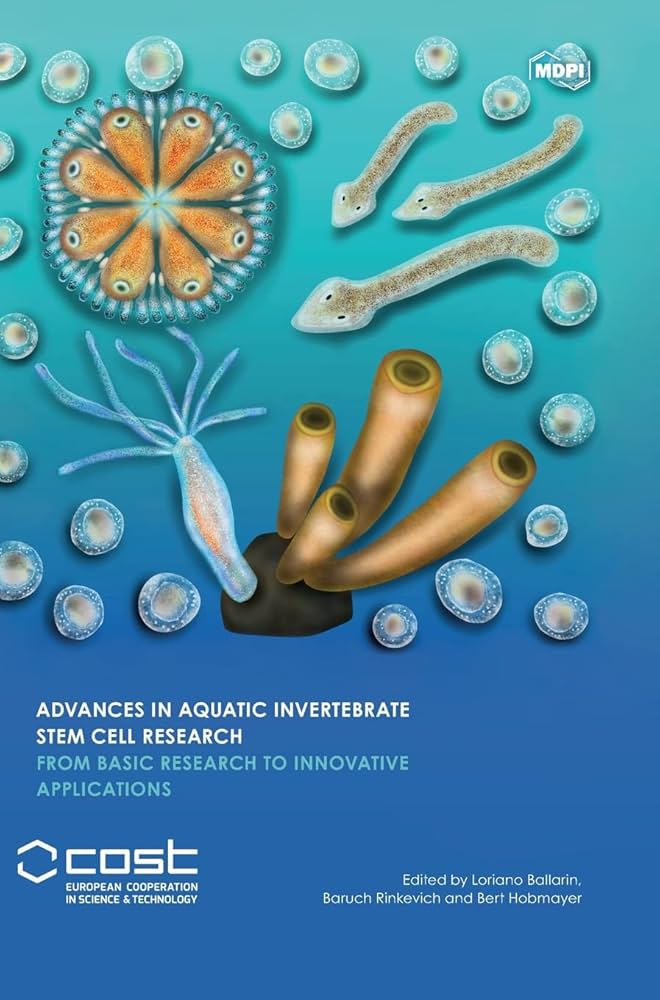
| Judul | Advances in Aquatic Invertebrate Stem Cell Research : From Basic Research to Innovative Applications / Edited by Loriano Ballarin; Baruch Rinkevich; Bert Hobmayer |
| Penerbitan | Basel : MDPI - Multidisciplinary Digital Publishing Institute, 2022 |
| Deskripsi Fisik | 398 p. :ill. |
| ISBN | 978-3-0365-1635-6 |
| Subjek | AQUATIC INVERTEBRATES |
| Abstrak | Aquatic invertebrates represent the largest biodiversity and the widest phylogenetic radiation on Earth, with more than 2 million known species. Up until a few years ago, their use as Model organisms in biological research was limited by the paucity of omics data. Recently, the situation has rapidly changed and is still changing. Today, the genomes and various transcriptomes of many aquatic invertebrate species, as well as many recombinant proteins of invertebrate origin, are available. New technologies have revolutionised the available toolbox of research methodologies. This explains the rising interest of researchers in the use of aquatic invertebrates as reliable model organisms. In contrast to the prevalence of diverse oligopotent and unipotent stem cells in vertebrates, aquatic invertebrates (especially non-ecdysozoan invertebrates) exhibit multiple adult cell types with stem cell attributes characterised by multipotency and pluripotency; furthermore, these give rise to cell lineages characteristic of more than a single germ layer, sometimes with somatic and germ line potentials. In addition, unlike vertebrates, aquatic invertebrate adult stem cells are disseminated and widespread inside the animal body, are not associated with a regulatory microenvironment (niche), and do participate in ageing and regeneration phenomena. These properties can help us to better understand the processes and phenomena in mammalian stem cell biology, such as natural chimerism and cancer, ageing and senescence, immunity, and autoimmune responses, which are all difficult to explain or understand in the human context. |
| Bentuk Karya | Tidak ada kode yang sesuai |
| Target Pembaca | Tidak ada kode yang sesuai |
| Lokasi Akses Online |
https://oer.unair.ac.id/files/original/78541e5e4c457fbc59ef8927ddbad60a.pdf |
| No Barcode | No. Panggil | Akses | Lokasi | Ketersediaan |
|---|---|---|---|---|
| 327425192 | 639.34 Adv | Baca Online | Perpustakaan Pusat - Online Resources Ebook |
Tersedia |
| Tag | Ind1 | Ind2 | Isi |
| 001 | INLIS000000000159052 | ||
| 005 | 20250313094927 | ||
| 007 | ta | ||
| 008 | 250313################|##########|#|## | ||
| 020 | # | # | $a 978-3-0365-1635-6 |
| 035 | # | # | $a 0010-0325000671 |
| 082 | # | # | $a 639.34 |
| 084 | # | # | $a 639.34 Adv |
| 245 | # | # | $a Advances in Aquatic Invertebrate Stem Cell Research : $b From Basic Research to Innovative Applications /$c Edited by Loriano Ballarin; Baruch Rinkevich; Bert Hobmayer |
| 260 | # | # | $a Basel :$b MDPI - Multidisciplinary Digital Publishing Institute,$c 2022 |
| 300 | # | # | $a 398 p. : $b ill. |
| 520 | # | # | $a Aquatic invertebrates represent the largest biodiversity and the widest phylogenetic radiation on Earth, with more than 2 million known species. Up until a few years ago, their use as Model organisms in biological research was limited by the paucity of omics data. Recently, the situation has rapidly changed and is still changing. Today, the genomes and various transcriptomes of many aquatic invertebrate species, as well as many recombinant proteins of invertebrate origin, are available. New technologies have revolutionised the available toolbox of research methodologies. This explains the rising interest of researchers in the use of aquatic invertebrates as reliable model organisms. In contrast to the prevalence of diverse oligopotent and unipotent stem cells in vertebrates, aquatic invertebrates (especially non-ecdysozoan invertebrates) exhibit multiple adult cell types with stem cell attributes characterised by multipotency and pluripotency; furthermore, these give rise to cell lineages characteristic of more than a single germ layer, sometimes with somatic and germ line potentials. In addition, unlike vertebrates, aquatic invertebrate adult stem cells are disseminated and widespread inside the animal body, are not associated with a regulatory microenvironment (niche), and do participate in ageing and regeneration phenomena. These properties can help us to better understand the processes and phenomena in mammalian stem cell biology, such as natural chimerism and cancer, ageing and senescence, immunity, and autoimmune responses, which are all difficult to explain or understand in the human context. |
| 650 | # | # | $a AQUATIC INVERTEBRATES |
| 856 | # | # | $a https://oer.unair.ac.id/files/original/78541e5e4c457fbc59ef8927ddbad60a.pdf |
| 990 | # | # | $a 327425192 |
Content Unduh katalog
Karya Terkait :